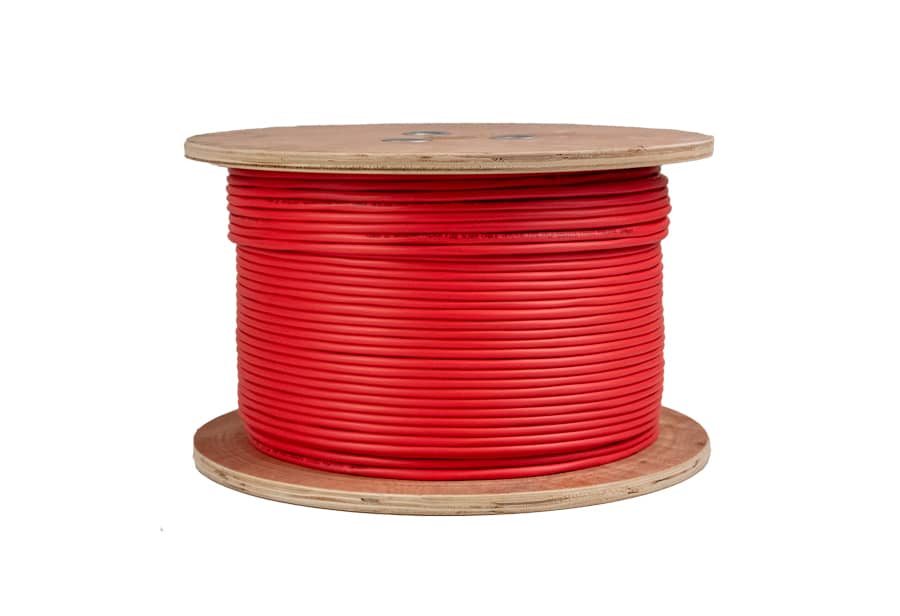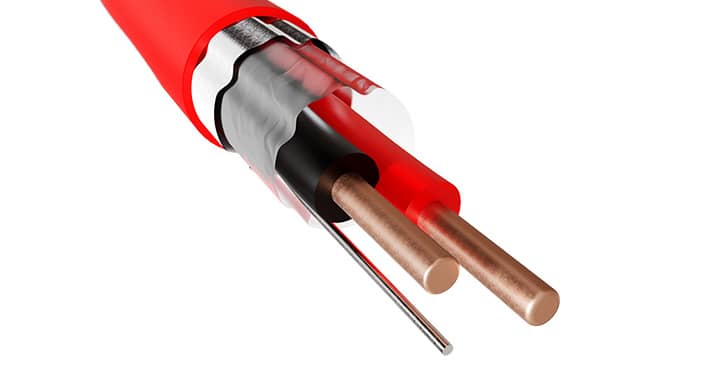Detailed Explanation of the Differences Between FPLP and FPLR Cables | Must-read for Selecting Fire-resistant Cables
 Apr 28,2025
Apr 28,2025

 Suke
Suke
In the field of building safety, the fire resistance performance of cables is of vital importance. Especially in fire alarm systems, choosing the right cable not only affects the stable operation of equipment but also directly influences the safety and compliance of the entire building.
Among various types of fire-resistant cables, FPLP cables and FPLR cables are often confused. This article will provide a detailed explanation of their differences and offer practical purchasing suggestions to help you easily select the right product!
What is FPLR Cable?
FPLR cable (Fire Power Limited Riser Cable) refers to a type of fire alarm cable specifically designed for installation in building risers. According to the National Electrical Code (NEC) of the United States, FPLR cables must pass the UL 1666 riser flame test to ensure that they can effectively prevent the spread of flames along the riser in the event of a fire.
Features of FPLR cables:
The rated voltage is usually 300V.
Use flame-retardant PVC or LSZH (low smoke zero halogen) outer sheath.
Vertical channels, such as cable shafts and pipe shafts installed between floors
It has good flame-retardant performance, but is not suitable for spaces with air circulation.
What is FPLP Cable?
FPLP cable (Fire Power Limited Plenum Cable) is a fire alarm cable specifically designed for the air circulation spaces within buildings, such as ceiling spaces or under-floor cavities. FPLP cables must pass more rigorous UL 910 smoke and flame tests and can minimize the spread of toxic smoke and flames to the greatest extent in case of fire.
Features of FPLP Cable:
Both have a rated voltage of 300V.
Use low-smoke, low-toxicity, and highly flame-retardant materials.
Suitable for environments with extremely high fire protection requirements such as hospitals, airports, and shopping centers.
The safety level is higher than FPLR, and the price is usually higher as well.
The main differences between FPLR and FPLP cables
To have a clearer understanding of the differences between the two types of cables, the following comparison table is provided:
|
Item |
FPLR Cable (Riser Cable) |
FPLP Cable (Plenum Cable) |
|
Installation Location |
Vertical shafts between floors |
Air circulation areas (ceilings/floors)
|
|
Flame Retardant Standard |
UL 1666 |
UL 910 (more stringent)
|
|
Material Characteristics |
Flame-retardant PVC or LSZH sheath |
Low smoke, low toxicity, super flame-retardant materials
|
|
Smoke Toxicity |
Standard smoke and toxicity |
Extremely low smoke, extremely low toxicity
|
|
Cost |
Lower, economical |
Higher, better safety
|
|
Application Scenarios |
Office buildings, residential building shafts |
Hospitals, airports, shopping malls and other public places
|
In short, if your wiring environment involves air circulation spaces (such as central air conditioning channels), choose FPLP cable; if it is only vertically laid in shaft spaces, FPLR cable can meet the requirements.
What should be noted when purchasing FPLR Cable?
1. Confirm the application environment.
Is it vertical cabling between floors?
Are there any requirements for air circulation?
2. Check the certification mark.
The cables should be UL certified and marked with the words "FPLR" or "FPLP".
3. Pay attention to material properties.
Is LSZH material used? Does it meet the project's requirements for environmental protection and low smoke?
4. Understand the qualifications of suppliers
Choose manufacturers or suppliers with experience and who can provide complete certification documents.
5. Taking into account both cost and safety comprehensively
Do not blindly pursue low prices; instead, strike a reasonable balance between budget and performance requirements.
Frequently Asked Questions (FAQ)
Q: Can FPLR cables be used as substitutes for FPLP cables?
A: Generally not recommended. FPLP cables meet higher fire protection standards and are suitable for specific air circulation environments. Using FPLR cables as substitutes for FPLP may result in non-compliance with building codes.
Q: Can FPLP cables be used in shafts?
A: Yes. FPLP standards are higher than those of FPLR, so they are technically compatible, but they are more expensive. It is recommended to choose based on actual needs.
Q: How to quickly identify FPLR cables?
A: Check the UL certification label on the cable sheath, which usually indicates "UL Listed FPLR Cable".
Conclusion: Choose the Right Cable to Ensure Building Safety
Whether it is FPLR cable or FPLP cable, the correct selection not only affects the quality of the project but also the safety of personnel and the compliance of the project. When purchasing, it is essential to choose the appropriate product based on the specific installation environment and relevant regulatory requirements.
As a professional cable supplier, we offer FPLR and FPLP cables that comply with UL certification standards, and we also support custom specifications to help you easily meet the demands of various projects.
Welcome to contact us for the latest product catalog, technical parameter sheets and quotation information!


 Home
Home
 Understanding The Different Types Of Power Cable And Their Applications In Industry And Home Use
Understanding The Different Types Of Power Cable And Their Applications In Industry And Home Use  You May Also Like
You May Also Like

 Tel
Tel
 Email
Email
 Address
Address













